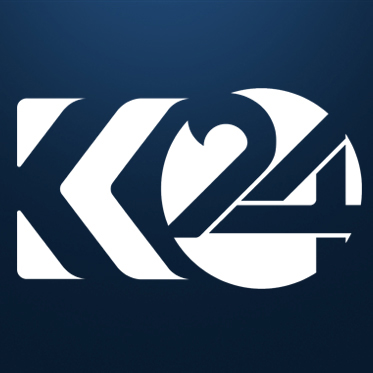Iran says IRGC killed 'large number' of fighters based in Kurdistan Region

ERBIL (Kurdistan 24) – A "large number” of Kurdish fighters were “killed or wounded” in Iran’s latest cross-border operations inside the Kurdistan Region, the country’s elite Islamic Revolutionary Guard Corps (IRGC) announced on Friday amid a recent spike in its confrontations with opposition groups.
The IRGC’s ground forces utilized rockets, unmanned drones, and artillery in an operation that began on Wednesday, according to the IRGC-affiliated Fars news agency. The actions come in retaliation to recent “movements” of “global arrogance-sponsored” Kurdish opposition groups that Tehran considers terrorist organizations.
Some military observers have claimed that the most recent Iranian bombardment was fired from within the Kurdistan Region, but this could not be independently confirmed.
Activists supporting Iranian Kurdish (Rojhilati) independence and pluralistic ideals created several movements in Iran throughout the second half of the twentieth century but many were forced to flee as it came to a close. Some groups set up headquarters in the Kurdistan Region, itself fighting for autonomy and freedom at the time.
In September, the IRGC launched what it claimed was a cross-border operation in which it used land-to-land missiles across a 220-kilometer distance to target the headquarters of the Kurdistan Democratic Party (KDP-Iran) and the Democratic Party of Iranian Kurdistan (PDKI) outside the town of Koya, in Erbil Province. The attack killed 15 and injured 42 more.
Since then, the frequency of such incidents had declined until this week, with multiple deadly clashes taking place between the IRGC and various Kurdish opposition groups in the Iranian provinces of Kermanshah (Kermashan) and West Azerbaijan.
Amid continuing escalation, multiple Iranian military officials have publicly threatened to target the groups’ bases across the border into the Kurdistan Region. On Friday, Defense Minister Amir Hatami said, “Any enemy… intending to violate the territorial integrity” of Iran “will be met with a decisive” response.
Hatami’s statement came shortly before the military-focused state news agency Sepah released footage showing Iranian rockets demolishing multiple buildings that the report claimed were opposition group bases in the Kurdistan Region.
One report by the semi-official Fars news outlet said the IRGC used “laser-guided artillery” systems to target a number of bases near the Kurdistan Region border. Another report published by Tasnim wrote that in aerial cross-border attacks, also in the Kurdistan Region, the military used Mohajer 6 drones equipped with Qaim missiles.
Photos published by the agency appeared to be similar to a segment in the video footage published on Fars. The authenticity of either video could not be immediately confirmed.

These purported retaliatory actions followed an attack on Tuesday in which fighters thought to be affiliated to the KDP-I killed three IRGC members in an apparent ambush on a military vehicle near the Rojhilati border city of Piranshahr, located in West Azerbaijan Province.
A day later, Iranian artillery bombarded Kurdistan Region areas close to Piranshahr, targeting bases of the armed group. Shells struck a civilian home, killing a teenage girl and wounding two of her brothers. The casualties caused immediate condemnations by the Kurdistan Regional Government (KRG), both of Tehran's shelling and the fighters’ use of Kurdistan Region territory as a launchpad to attack IRGC forces.
Read More: After death of teenage girl, KRG demands Iran stop shelling Kurdistan Region
In a separate skirmish that same day, border troops “destroyed” a team of Kurdish fighters that “intended to infiltrate” Iranian territory through the country’s western perimeter, the Tasnim agency reported. The IRGC forces, stationed at the Najaf Ashraf Base, attacked the fighters near the city of Javanrud (Jwanro), in Kermanshah Province and located 250 kilometers southeast of Piranshahr.
The military also shelled mountainous areas surrounding a village in Jwanro County, seeking to strike hideouts of the group, wrote Hengaw, a local monitor that documents and writes about human rights violations against Kurds in Rojhilat. No resulting casualties were reported.
Multiple Kurdish armed groups, often with confusingly similar names, operate throughout the border areas, such as the PDKI and its offshoot KDP-I, the Komala Party of Iranian Kurdistan and its own two offshoots. Other armed factions include the Kurdistan Freedom Party and the Kurdistan Workers’ Party (PKK)-affiliated Kurdistan Free Life Party (PJAK).
These developments coincide with mounting tensions between Iran and the US following crippling sanctions that Washington imposed on Iran, in place now for several months, and over a year after President Donald Trump withdrew from a 2015 international deal aimed at curbing Iran's nuclear capability.
Since June, Iranian officials have made multiple announcements that their government was reducing its commitments laid out by the deal, formally known as the Joint Comprehensive Plan of Action (JCPoA), which it appears to have breached. According to Tehran, it has gone beyond the uranium enrichment level permitted under the deal as well as exceeding the stockpile of nuclear material the agreement allows it to maintain.
Iranian artillery fire has been a regular occurrence on the Kurdistan Region’s border areas for years and has resulted in the evacuation of dozens of Kurdish villages.
Turkey also frequently strikes mountainous terrain across its border with the Kurdistan Region, targeting alleged Kurdistan Workers’ Party (PKK) positions. Such attacks have led to dozens of civilian casualties and repeated pleas from the KRG for both sides to cease their activities on its soil and take their fighting elsewhere.
Editing by John J. Catherine
